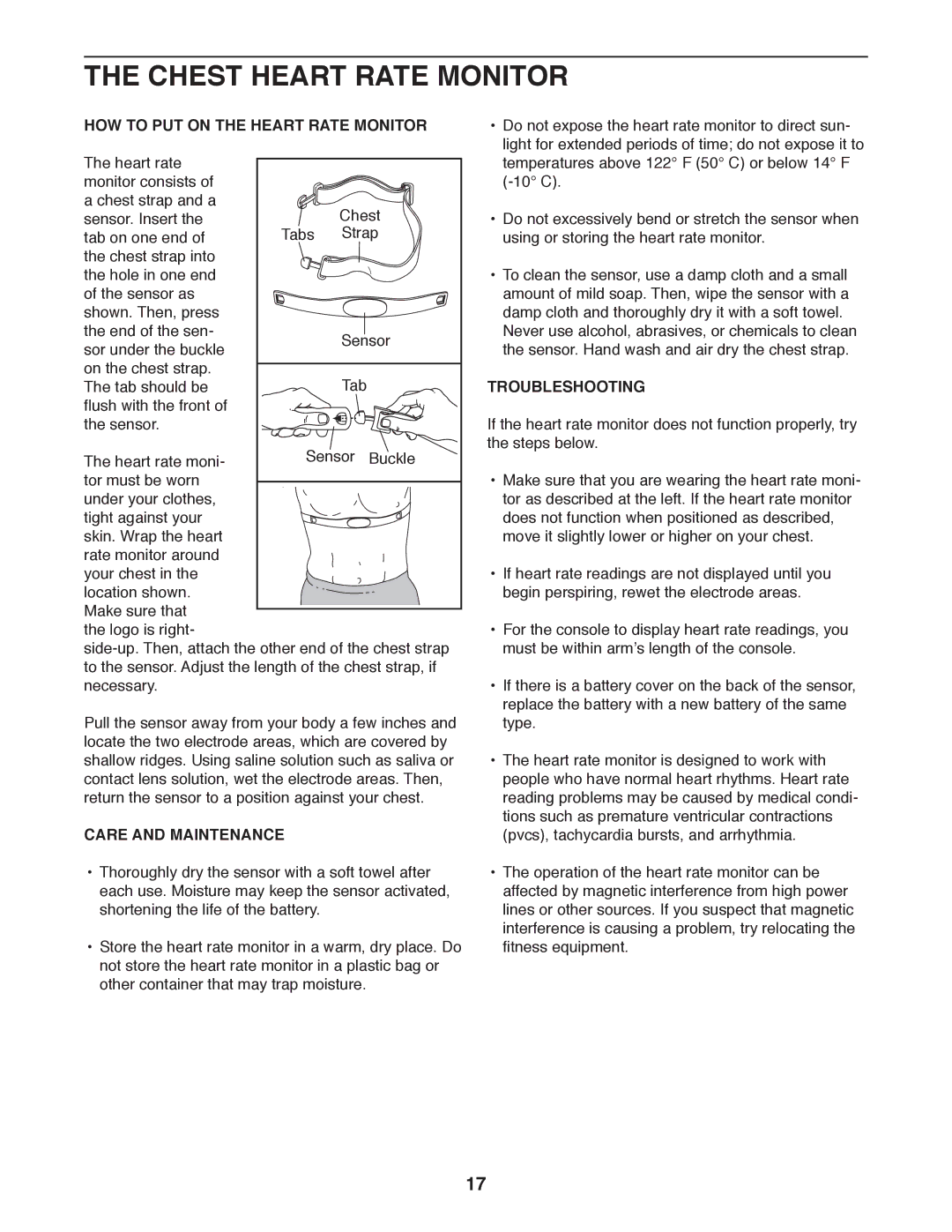
THE CHEST HEART RATE MONITOR
HOW TO PUT ON THE HEART RATE MONITOR
The heart rate |
|
|
monitor consists of |
|
|
a chest strap and a |
| Chest |
sensor. Insert the | Tabs | |
tab on one end of | Strap | |
the chest strap into |
|
|
the hole in one end |
|
|
of the sensor as |
|
|
shown. Then, press |
|
|
the end of the sen- |
| Sensor |
sor under the buckle |
| |
|
| |
on the chest strap. |
| Tab |
The tab should be |
| |
flush with the front of |
|
|
the sensor. |
|
|
The heart rate moni- | Sensor Buckle | |
tor must be worn |
|
|
under your clothes, |
|
|
tight against your |
|
|
skin. Wrap the heart |
|
|
rate monitor around |
|
|
your chest in the |
|
|
location shown. |
|
|
Make sure that |
|
|
the logo is right- |
|
|
Pull the sensor away from your body a few inches and locate the two electrode areas, which are covered by shallow ridges. Using saline solution such as saliva or contact lens solution, wet the electrode areas. Then, return the sensor to a position against your chest.
CARE AND MAINTENANCE
•Thoroughly dry the sensor with a soft towel after each use. Moisture may keep the sensor activated, shortening the life of the battery.
•Store the heart rate monitor in a warm, dry place. Do not store the heart rate monitor in a plastic bag or other container that may trap moisture.
•Do not expose the heart rate monitor to direct sun- light for extended periods of time; do not expose it to temperatures above 122° F (50° C) or below 14° F
•Do not excessively bend or stretch the sensor when using or storing the heart rate monitor.
•To clean the sensor, use a damp cloth and a small amount of mild soap. Then, wipe the sensor with a damp cloth and thoroughly dry it with a soft towel.
Never use alcohol, abrasives, or chemicals to clean the sensor. Hand wash and air dry the chest strap.
TROUBLESHOOTING
If the heart rate monitor does not function properly, try the steps below.
•Make sure that you are wearing the heart rate moni- tor as described at the left. If the heart rate monitor does not function when positioned as described, move it slightly lower or higher on your chest.
•If heart rate readings are not displayed until you begin perspiring, rewet the electrode areas.
•For the console to display heart rate readings, you must be within arm’s length of the console.
•If there is a battery cover on the back of the sensor, replace the battery with a new battery of the same type.
•The heart rate monitor is designed to work with people who have normal heart rhythms. Heart rate reading problems may be caused by medical condi- tions such as premature ventricular contractions (pvcs), tachycardia bursts, and arrhythmia.
•The operation of the heart rate monitor can be affected by magnetic interference from high power lines or other sources. If you suspect that magnetic interference is causing a problem, try relocating the fitness equipment.
17
